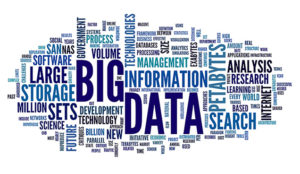
That ability to analyze massive amounts of data to support the decision-making process is a top priority for nearly every type of business today. Big data analytics is generally divided up into three main models, predictive, prescriptive and descriptive and they are divided further into primary categories of long-term analysis and mining of data in near real-time. While deceptive analytics capabilities currently dominate the market, analysts are predicting significant growth in prescriptive analytics technologies. (Source: Hexa Research). Long-term analysis of data is made possible by new enterprise data operating systems like Hadoop, which distributes data to many commodity processors running workloads in the cloud.
These advancements in big data analytics capabilities are giving organizations a critical advantage in understanding customer behaviors, developing predictive models, maximizing revenues, and providing intelligence to optimize the customer journey. The challenge with this data deluge is that not all businesses are equipped to handle the data analytics technologies and expertise required for using big data analysis. Let’s look at some of the biggest pro and cons of keeping big data analytics in-house vs. outsourcing.
- Pro Getting highly skilled professionals – As the volume of data collected by businesses continues to skyrocket, data scientists and specialized data analysts are in short supply. Hiring the right mix of talent with technical expertise, data science knowledge, and finding those with the right vertical focus (i.e., retail, telecom, financial services, etc.) is beyond tough. Not only that, even with a company’s big data engine running in the cloud, using AWS, Microsoft Azure, and Google Cloud, customers struggle with finding efficient ways to manage and mind data sets, to extract meaningful information. Cloud management platforms are needed to handle these data loads to transfer information into manageable pieces for analysis. By outsourcing these data analytics task to a partner with deep industry expertise, an organization can gain a competitive advantage, derive real insights from their data, even in a multi-cloud environment.
- Cons Losing control of data – One of the downsides of working with a partner that provides analytics-as-a-service is that organizations relinquish control of much of their data. This shift of power might raise concerns about the security of the data, if it is stored in the public cloud, for instance, or if the data is kept in the partner’s data center. This could raise concerns for meeting compliance rules and regulations such as General Data Protection Regulation (GDPR) which require safeguards around personally identifiable information. Also, because the partner is mining the data, the logic and algorithms they use to analyze the data belong to the partner, not the customer. While the customer owns the ‘answers,’ like predictive, prescriptive or descriptive analysis, they do not own the models used to come up with that analysis. This control gap can become an issue if the customer decides to end the relationship with the analytics service provider, for whatever reason.
- Pros Getting more value from data – Top data analytics services today are leveraging an on-premise and cloud-hosed BI data warehouse infrastructures for maximum data analysis and processing power. New services include such as Amazon’s Redshift or Google’s BigQuery data analytics service. Cloud-based data analytics services are generally more scalable and more manageable and have extensive reporting capabilities. They also have the power to process extensive datasets much more efficiently. Because these offerings are more robust and flexible, they take the focus from mining data to full decision support. As a real-life example, a retailer might rely on a cloud-based analytics provider to collect online and in-store retail sales and customer demographic data, tying in behavioral data. Then the provider can analyze that information to help the retailer develop targeted messaging, promotions, and offers, even in real-time.
- Cons Missing the metadata – Data scientists describe metadata as the information that describes other data or ‘data about the data.’ It is the descriptive, administrative and structural data that defines a firm’s data assets. It’s the information about data including the attributes, properties, and tags that can be used to classify the information. Metadata is a critical component of any successful big data initiative because once defined metadata directs analytics and reporting. Service providers that don’t adequately focus on metadata priorities upfront will handcuff any big data program. Defining metadata can also be ‘personal’ to a company because it includes creating consistent definitions around certain words like ‘customer,’ for example. Organizations need to zero in on metadata definitions very early on in any big data project, either working with an analytics provider or when the project is handled internally.
Whether that’s partnering with a big data analytics partner or focusing efforts in-house, organizations that extract meaningful insights by leveraging big data will improve the customer experience, achieve their business goals, and gain an unprecedented competitive advantage.
